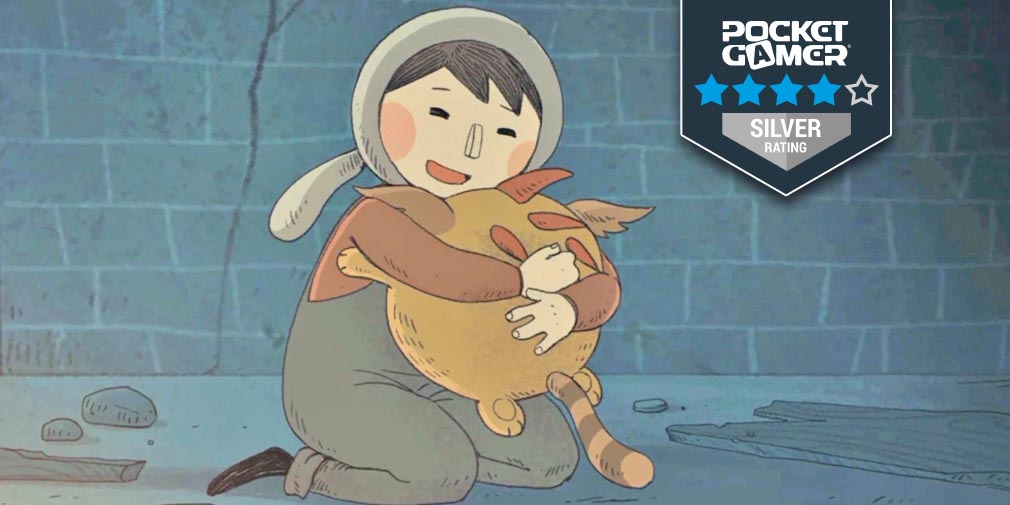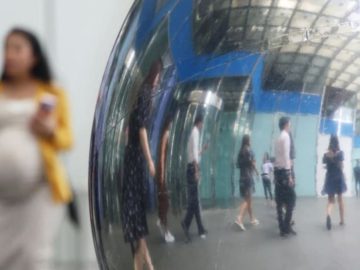Today’s workforce is more diverse in age than ever before. Some organizations, in fact, are boasting as many as five different generational groups working side by side. Each generation brings its own set of values, expectations, and work habits, making strategic planning frameworks essential for leveraging this diversity.
This, of course, brings challenges. Understanding and managing these differences is crucial not only for maintaining harmony, but also for enhancing organizational performance through a more inclusive and innovative environment.
Understanding the Multigenerational Workforce
To under the multigenerational workforce, let’s begin by clearly profiling the different generations.
The oldest generation in the workforce, Baby Boomers, born between 1946 and 1964, typically value stability and loyalty. They prefer face-to-face communication and may be less comfortable with flexible work arrangements compared to younger generations.
Generation X, born between 1965 and 1980, is known for their strong work ethic, independence, and skepticism of authority. They are adaptable to technology but value clear, direct communication.
The largest portion of the current labor force, Millennials, born between 1981 and 1996, prioritize flexibility, work-life balance, and purpose-driven work. They are digital natives, comfortable with technology and continuous feedback.
Lastly, Generation Z, born between 1997 and 2012, are the newest entrants to the workforce who value autonomy, tech-integration, and social justice. They prefer quick, frequent communication and are highly entrepreneurial.
Generational differences can lead to varied challenges within an organization, such as misaligned communication preferences and differing expectations regarding work culture and technology use.
For example, Baby Boomers might prefer more formal communication methods, whereas Gen Z workers are more comfortable with instant messaging and social media platforms. These discrepancies can lead to misunderstandings and decreased productivity if not effectively managed.
Leadership for a diverse age group
Leaders must develop an adaptive leadership style that is responsive to the needs and preferences of different generational groups within the workforce. This involves not only understanding the unique characteristics of each group but also integrating this knowledge into everyday management practices.
Effective communication in a multigenerational workforce requires a varied approach. First, implement digital tools to engage younger workers like Millennials and Gen Z who are accustomed to fast-paced, digital communication. Concurrently, maintain traditional communication methods such as regular in-person meetings or phone calls for Baby Boomers and Gen X who may value more personal interaction.
Real-world examples of companies that have successfully implemented such adaptive strategies include global consulting firms like Deloitte and PwC, which have developed tailored engagement program presentations that cater to different generational needs and preferences, enhancing both employee satisfaction and productivity.
Organizations looking to adopt these and other best practices can benefit from resources available on Flevy.com, the leading marketplace for business best practices. Flevy offers a comprehensive collection of frameworks, tools, and guides to help organizations effectively manage a diverse workforce and enhance overall productivity.
The foundation to a cohesive work environment
Creating an inclusive culture is pivotal for organizations aiming to harness the strengths of a diverse generational workforce. This includes policies and practices that promote respect and equal opportunities for all, regardless of age. For instance, training sessions that focus on generational awareness can help reduce stereotypes and promote understanding.
Effective conflict resolution strategies are essential, as differing generational perspectives can sometimes lead to misunderstandings. One approach is to facilitate open discussions where employees from different generations are encouraged to express their viewpoints and find common ground. This fosters a culture of collaboration and mutual respect.
Take advantage of generational strengths
Cross-generational mentoring programs are an excellent strategy for leveraging the diverse skills and experiences within an organization. Older employees often bring a wealth of knowledge and experience, while younger employees can contribute fresh ideas and expertise in technology.
A notable business case example is General Electric, which has implemented reverse mentoring programs where younger employees mentor senior staff on new technologies, demonstrating the value of reciprocal learning.
The process of designing team-building activities to bridge generational gaps can also be highly effective. These might include workshops or projects that require mixed-age teams to work together to solve problems or develop new ideas. Such activities not only improve teamwork across generations but also enhance understanding and appreciation of each generation’s unique contributions.
Several organizations have set benchmarks in managing multigenerational workforces effectively. Accenture, for instance, has developed specific training modules that cater to the needs and learning styles of different generations. Their approach not only improves engagement across all age groups but also boosts overall productivity.
Another example is Ford Motor Company, which has implemented flexible working arrangements that appeal to both older employees seeking more traditional schedules and younger employees looking for flexibility. This strategy has helped Ford maintain high levels of employee satisfaction and retention.
The importance of understanding the unique characteristics and needs of each generational cohort within the workforce is becoming more obvious than ever to management. By adopting flexible leadership styles, inclusive policies, and strategy frameworks, organizations can enhance productivity and foster a harmonious work environment. The real-world examples provided illustrate that when generational differences are effectively managed, they can be transformed from potential challenges into powerful assets that drive organizational success.
As the new gen Z workers enter the workforce, managing a multi-generational workforce is becoming a more pressing issue. Studies have shown leading organizations are now pursuing the following 10 tactics for effectively managing this diverse workforce.
10 tactics for multigenerational management
- Promote a culture of respect and inclusion
Creating a culture of respect and inclusion means establishing workplace policies and practices that ensure all employees feel valued regardless of their generational cohort. It involves fostering an environment where diverse perspectives are heard and appreciated.
A culture of respect and inclusion boosts employee morale and reduces conflicts, leading to higher productivity. It also enhances employee retention by making everyone feel they belong.
Implementing diversity training programs that educate employees on generational differences and foster mutual respect is a practical way to deploy this tactic. Another approach is setting up forums or councils where employees from different generations can share their experiences and suggestions for improving workplace inclusivity.
Large corporations with diverse workforces benefit most from this tactic. Their complexity and size make it critical to have structured efforts that ensure all employees feel included and valued.
So, how is your organization addressing the needs of a diverse workforce?
- Encourage inclusive leadership
Inclusive leadership involves training leaders to value and leverage the contributions of all generational groups. It means adopting leadership styles that are flexible and responsive to the needs of a diverse workforce.
Leaders who practice inclusive leadership can significantly improve team dynamics and performance. It also creates a more engaging and motivating work environment for employees.
One way to encourage inclusive leadership is by providing leaders with training on the unique characteristics and strengths of each generational cohort. Leaders can also be encouraged to solicit feedback from employees regularly to understand their needs and preferences better.
This tactic is particularly effective for organizations that have a hierarchical structure where leadership decisions greatly impact day-to-day operations. Companies in industries like finance, healthcare, and technology, where rapid changes are common, also find this approach beneficial.
- Facilitate open dialogue
Facilitating open dialogue means creating opportunities for employees from different generations to communicate and share their views and concerns openly. This approach helps address issues promptly and fosters a culture of transparency and trust. Open dialogue is crucial for understanding the diverse needs of a multigenerational workforce and finding common ground.
Open dialogue can be facilitated through regular town hall meetings where employees can voice their opinions and ask questions. Another method is to establish anonymous suggestion boxes or online platforms where employees feel safe to share their thoughts without fear of judgment.
This tactic works well for organizations of all sizes but is especially effective in companies with a dynamic and fast-paced environment. Startups and creative industries, where innovation and quick decision-making are key, particularly benefit from fostering open communication channels.
What steps can you take today to ensure every employee feels valued and heard?
- Implement flexible work policies
Implementing flexible work policies involves offering various work arrangements such as remote work, flexible hours, and part-time options. These policies cater to the diverse needs of different generations within the workforce, accommodating their varying work-life balance preferences.
Flexible work policies are important because they increase employee satisfaction and productivity. Employees who can balance their personal and professional lives are more engaged and less likely to experience burnout.
For example, a company could offer remote work options for employees who prefer working from home. Alternatively, providing flexible hours allows employees to start and end their workday at times that best suit their personal schedules.
This tactic is particularly effective for organizations in tech, creative industries, and any sector where the work can be done remotely. Such flexibility attracts top talent and retains employees by catering to their preferred working styles.
What flexible policies can your organization implement today?
- Customize employee benefits
Customizing employee benefits means offering a range of benefits that cater to different life stages and generational needs. This approach ensures that benefits packages are relevant and valuable to all employees, from younger workers just starting their careers to older employees planning for retirement.
Customizing benefits is crucial because it demonstrates that the organization values and supports its employees’ diverse needs, enhancing overall job satisfaction and loyalty.
Deploying this tactic might include providing wellness programs, retirement planning services, and family support services. For instance, younger employees might appreciate student loan repayment assistance, while older employees might value comprehensive retirement planning options.
Organizations in the healthcare, finance, and education sectors often find this approach particularly effective due to the diverse demographics of their workforce. Customizing benefits helps these organizations attract and retain talent by meeting the specific needs of their employees.
How can you customize your benefits to meet diverse needs?
- Tailor Communication methods
Tailoring communication methods involves using a variety of tools and approaches to suit different generational preferences within the workforce. This ensures that communication is effective and that all employees are kept informed and engaged.
Tailoring communication methods is vital because it prevents misunderstandings and improves overall productivity. Different generations have different communication styles, and addressing these preferences helps in maintaining smooth and efficient interactions.
For example, using instant messaging and social media platforms can engage younger employees like Millennials and Gen Z, who are comfortable with these tools. In contrast, older employees like Baby Boomers and Gen X might prefer emails or face-to-face meetings.
This tactic is most effective for organizations with a diverse workforce that spans multiple generations. Industries like consulting, healthcare, and education, where clear and effective communication is crucial, benefit greatly from this approach. Tailoring communication methods helps ensure that all employees are on the same page, regardless of their preferred communication style.
What communication methods can you tailor to ensure everyone stays informed and engaged?
- Provide Continuous Learning Opportunities
Providing continuous learning opportunities means creating ongoing training and development programs that are accessible to all generations. These programs focus on both technical skills and soft skills to keep employees competitive and motivated.
Continuous learning is essential because it helps employees stay up-to-date with industry trends and enhances their job satisfaction. It also fosters a culture of growth and adaptability within the organization.
For instance, offering online courses and workshops on emerging technologies can appeal to younger employees, while providing leadership training programs can benefit more experienced staff.
Organizations like tech firms and consulting companies, which thrive on innovation and expertise, find this tactic particularly effective. It ensures that employees of all ages are continuously improving and contributing to the company’s success.
- Promote Intergenerational Mentorship
Promoting intergenerational mentorship involves encouraging both traditional and reverse mentorship programs where employees from different generations can learn from each other. This approach helps bridge knowledge gaps and fosters mutual respect.
Intergenerational mentorship is effective because it leverages the diverse skills and experiences within the workforce, enhancing collaboration and innovation.
An example of this tactic is implementing a reverse mentoring program, where younger employees mentor senior staff on new technologies. Another example is pairing older employees with younger ones to share their extensive industry knowledge and experience.
This tactic works well in industries like finance, healthcare, and manufacturing, where both experience and fresh perspectives are valuable. It helps organizations maximize the potential of their diverse workforce by promoting continuous learning and growth.
- Design Age-Diverse Teams
Designing age-diverse teams means forming teams with a mix of ages to leverage the strengths and perspectives of different generations. This approach enhances creativity and problem-solving, as diverse teams can draw on a wider range of experiences and ideas. Age-diverse teams are effective because they foster innovation and improve decision-making, leading to better business outcomes.
One way to implement this tactic is by intentionally creating project teams that include members from different generations. Another approach is to organize team-building activities that require mixed-age groups to collaborate on solving problems or developing new ideas.
This tactic is especially effective for organizations in industries like technology, research and development, and marketing, where creativity and innovation are critical. By designing age-diverse teams, organizations can tap into the full potential of their workforce.
- celebrate milestones and achievements
Celebrating milestones and achievements means recognizing and celebrating the accomplishments of employees from all generations. This approach fosters a sense of belonging and appreciation, boosting morale and motivation. Celebrating achievements is important because it acknowledges the contributions of all employees and reinforces a positive work culture.
For example, organizing company-wide events to celebrate project completions or individual achievements can create a sense of community. Recognizing employees’ milestones, such as work anniversaries, with personalized messages or rewards, also enhances their sense of value.
This tactic is particularly effective in organizations with large, diverse teams where maintaining high morale is crucial. Companies in industries like retail, hospitality, and manufacturing find this approach beneficial as it helps build a cohesive and motivated workforce.
As generational diversity continues to grow, it is imperative for leaders and HR professionals to reassess and adapt their strategies to meet the evolving needs of their workforce.
By implementing the discussed best practice techniques, organizations can not only improve their operational effectiveness but also build a more dynamic and resilient workforce. Now is the time to take action and turn the challenge of a multigenerational workforce into an opportunity for growth and innovation.





